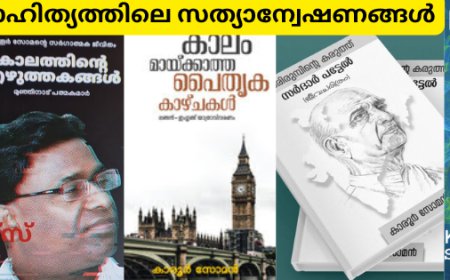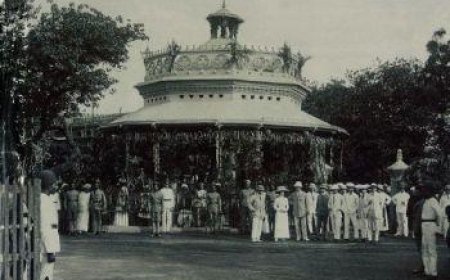Air India crash: Govt drafts new rules to remove obstructions blocking flight path
In the aftermath of the tragic Air India crash that claimed at least 270 lives, the Ministry of Civil Aviation has introduced a new set of draft regulations aimed at eliminating obstructions in aircraft flight paths near airports. The Aircraft (Demolition of Obstructions Caused by Buildings and Trees, etc.) Rules, 2025 were notified on June 18, just a week after the London-bound Air India Boeing 787-8 Dreamliner crashed into the BJ Medical College hostel complex in Ahmedabad’s Meghani Nagar area shortly after takeoff from Sardar Vallabhbhai Patel International Airport.The draft rules will come into effect upon publication in the Official Gazette and are intended to give authorities increased powers to act against structures or natural elements like trees that violate height restrictions in designated aerodrome zones. Under the proposed rules, any structure found exceeding the permissible height around a notified aerodrome will be issued a notice by the officer-in-charge. If the Director General of Civil Aviation (DGCA) or an authorised officer concludes that the structure violates the regulations, an official order mandating demolition or height reduction may be issued. “If the Director General, or any officer authorised by him in this behalf, on an examination of the details forwarded to him by the officer-in-charge of the aerodrome, is satisfied, after giving the owner an opportunity of being heard, that the building or tree in question does violate the provisions of the notification issued by the Central Government under sub-section (1) of section 18 of the [Bharatiya Vayuyan Adhiniyam] Act, he may pass an order in the matter directing the owner to demolish the building, or to cut the tree, or to reduce the height of the building, or the tree, as may be required for compliance with the provisions of the notification, within a specified period…” the notification reads.Owners will have up to 60 days to comply with the order, with a second extension of the same duration allowed only on valid grounds. Officers will also have the authority to conduct physical verification of the site during daylight hours after notifying the property owner. If the owner refuses to cooperate, the officer may proceed using available information and escalate the matter to the DGCA.In cases of continued non-compliance, the officer-in-charge must report the matter to the District Collector, who will then be responsible for carrying out the demolition or trimming, following the procedure used for removing unauthorised constructions. Affected owners can appeal the orders by filing with the First or Second Appellate Officer, accompanied by the prescribed documents and a fee of Rs 1,000. However, only those who comply with the demolition or reduction orders may claim compensation under section 22 of the Bharatiya Vayuyan Adhiniyam, 2024. Any new non-compliant structures erected after the notification will not be eligible for compensation.The Ministry has invited objections or suggestions from the public within 20 days of the notification’s publication. These may be submitted to the Director-General of Civil Aviation.

IN the aftermath of the tragic Air India crash that claimed at least 270 lives, the Ministry of Civil Aviation has introduced a new set of draft regulations aimed at eliminating obstructions in aircraft flight paths near airports.
The Aircraft (Demolition of Obstructions Caused by Buildings and Trees, etc.) Rules, 2025, were notified on June 18, just a week after the London-bound Air India Boeing 787-8 Dreamliner crashed into the BJ Medical College hostel complex in Ahmedabad’s Meghani Nagar area shortly after takeoff from Sardar Vallabhbhai Patel International Airport.
The draft rules will come into effect upon publication in the Official Gazette and are intended to give authorities increased powers to act against structures or natural elements like trees that violate height restrictions in designated aerodrome zones.
Under the proposed rules, any structure found exceeding the permissible height around a notified aerodrome will be issued a notice by the officer-in-charge. If the Director General of Civil Aviation (DGCA) or an authorised officer concludes that the structure violates the regulations, an official order mandating demolition or height reduction may be issued.
“If the Director General, or any officer authorised by him in this behalf, on an examination of the details forwarded to him by the officer-in-charge of the aerodrome, is satisfied, after giving the owner an opportunity of being heard, that the building or tree in question does violate the provisions of the notification issued by the Central Government under sub-section (1) of section 18 of the [Bharatiya Vayuyan Adhiniyam] Act, he may pass an order in the matter directing the owner to demolish the building, or to cut the tree, or to reduce the height of the building, or the tree, as may be required for compliance with the provisions of the notification, within a specified period…” the notification reads.
Owners will have up to 60 days to comply with the order, with a second extension of the same duration allowed only on valid grounds. Officers will also have the authority to conduct physical verification of the site during daylight hours after notifying the property owner. If the owner refuses to cooperate, the officer may proceed using available information and escalate the matter to the DGCA.
In cases of continued non-compliance, the officer-in-charge must report the matter to the District Collector, who will then be responsible for carrying out the demolition or trimming, following the procedure used for removing unauthorised constructions. Affected owners can appeal the orders by filing with the First or Second Appellate Officer, accompanied by the prescribed documents and a fee of Rs 1,000.
However, only those who comply with the demolition or reduction orders may claim compensation under section 22 of the Bharatiya Vayuyan Adhiniyam, 2024. Any new non-compliant structures erected after the notification will not be eligible for compensation.
The ministry has invited objections or suggestions from the public within 20 days of the notification’s publication. These may be submitted to the Director-General of Civil Aviation.





































































